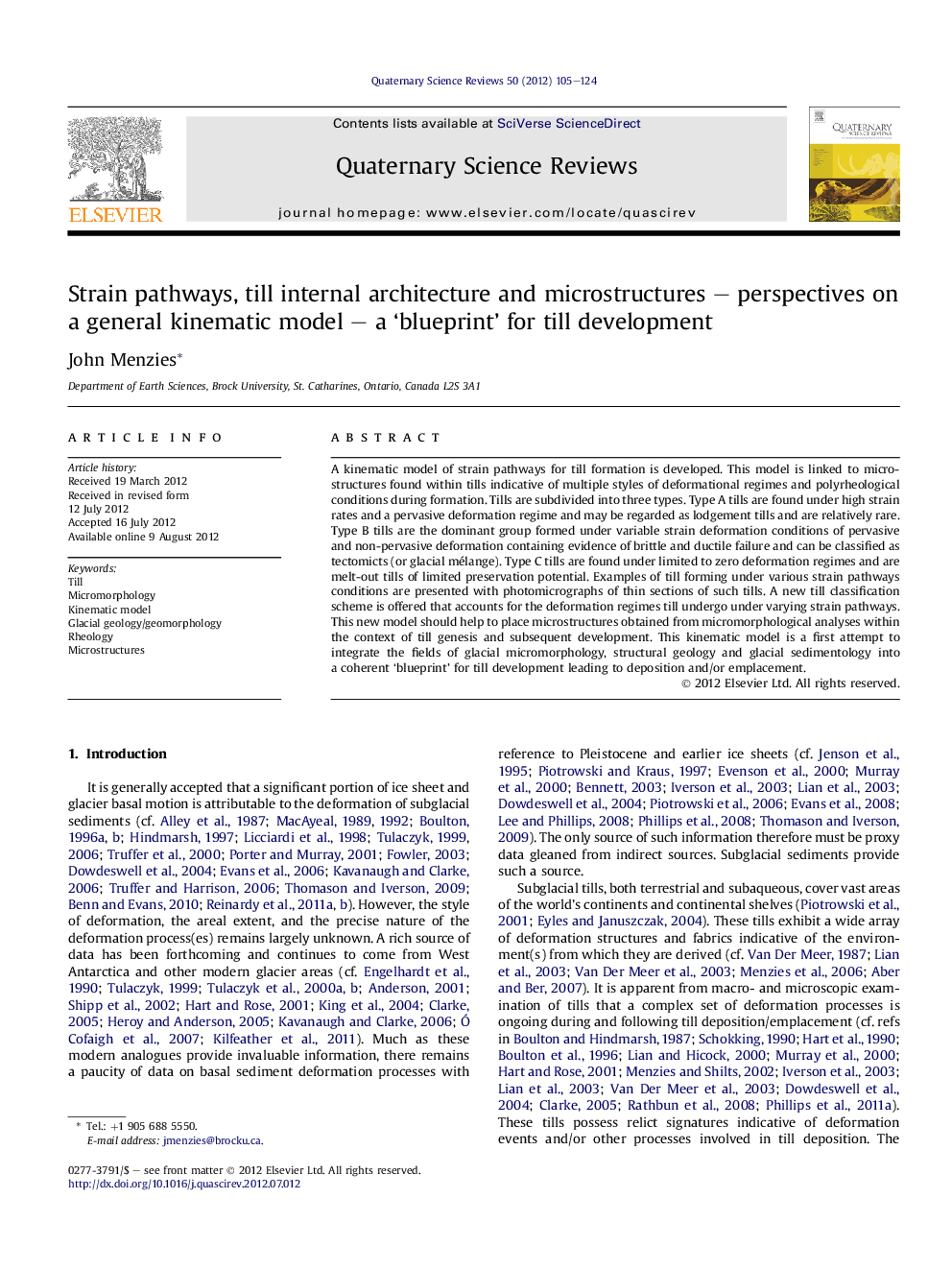| Article ID | Journal | Published Year | Pages | File Type |
|---|---|---|---|---|
| 4735728 | Quaternary Science Reviews | 2012 | 20 Pages |
A kinematic model of strain pathways for till formation is developed. This model is linked to microstructures found within tills indicative of multiple styles of deformational regimes and polyrheological conditions during formation. Tills are subdivided into three types. Type A tills are found under high strain rates and a pervasive deformation regime and may be regarded as lodgement tills and are relatively rare. Type B tills are the dominant group formed under variable strain deformation conditions of pervasive and non-pervasive deformation containing evidence of brittle and ductile failure and can be classified as tectomicts (or glacial mélange). Type C tills are found under limited to zero deformation regimes and are melt-out tills of limited preservation potential. Examples of till forming under various strain pathways conditions are presented with photomicrographs of thin sections of such tills. A new till classification scheme is offered that accounts for the deformation regimes till undergo under varying strain pathways. This new model should help to place microstructures obtained from micromorphological analyses within the context of till genesis and subsequent development. This kinematic model is a first attempt to integrate the fields of glacial micromorphology, structural geology and glacial sedimentology into a coherent ‘blueprint’ for till development leading to deposition and/or emplacement.
► A kinematic model is developed to illustrate strain pathways in till development. ► Till microstructures are related to variation in strain rate within subglacial till. ► A new till classification based upon the kinematic till model. ► A link between till microstructures and till deformation, strain rates and formation.
